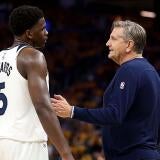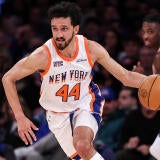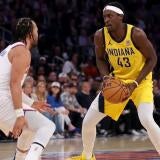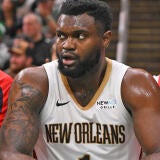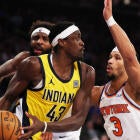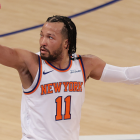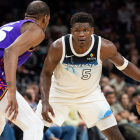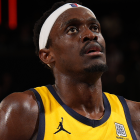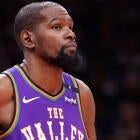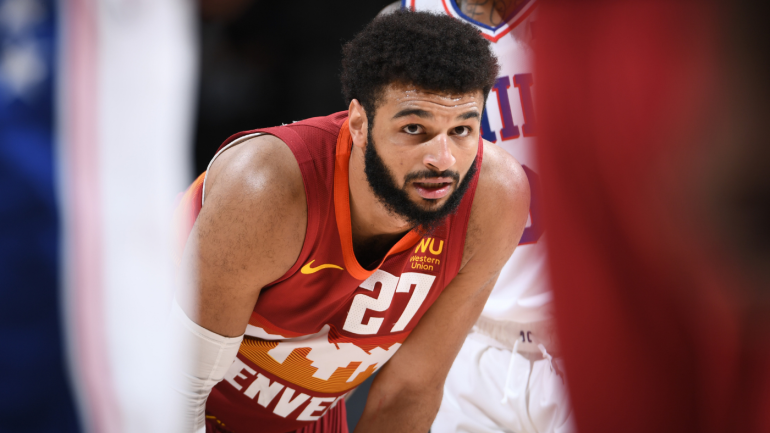
One of the NBA's young stars has just gone down with a torn ACL. Fans, and even some players, are placing blame on the condensed schedule as of late for the wear and tear that could have led to this. In other news around the country, spring is in full swing, and Barack Obama is revving up for his reelection campaign against Mitt Romney, the presumptive Republican nominee. The year is 2012.
You'd be forgiven for reading those first two sentences and immediately thinking it was referring to the present-day situation. Jamal Murray's torn ACL has led some to wonder if the condensed schedules teams have had to play recently had anything to do with it. In fact, some have wondered if other injuries to players like Kevin Durant, LeBron James, Anthony Davis, LaMelo Ball, James Wiseman, Gordon Hayward and Victor Oladipo could also be attributed to them.
That "some" isn't just fans speculating online, it also includes New Orleans Pelicans player Josh Hart.
Too many players getting hurt with this shortened season 🤦🏽♂️ need to not do this one again
— Josh Hart (@joshhart) April 13, 2021
But a very similar scenario played out the same way in 2012. Back then, the young star in question was Derrick Rose, who suffered his infamous torn ACL in Game 1 of the playoffs against the Philadelphia 76ers that would go on to be the first domino to fall in his injury-plagued career. After Rose went down along with Iman Shumpert, who also suffered a torn ACL that same postseason weekend -- both of those injuries happened shortly after Dwight Howard required season-ending back surgery -- players and coaches pointed the finger at that year's condensed schedule.
With the lockout-shortened season, teams had to play 66 games in the span of about four months. Bulls teammate Joakim Noah said the schedule "probably" led to more injuries that season. Sixers coach Doug Collins went even further and said "I don't think there's any question," that one contributed to the other. Knicks guard Baron Davis said that players "really never got the ample amount of time to rest and heal their bones because you're fighting for playoff position," but also noted that freak injuries happen in basketball. On the media side, former player Jalen Rose offered his take on the subject.
Everyone knew/feared that playing 66 games in 123 days plus travel would cause major injuries. Now we are seeing big name casualties #NBA
— Jalen Rose (@JalenRose) April 28, 2012
Then-commissioner David Stern said in no uncertain terms that there was "zero" connection between injuries to players like Rose and the condensed schedule, noting that the number of players suffering torn ACLs prior to the playoffs (three) was below the seasonal average (five) and that the injury rate was roughly the same as a normal 82-game season. A spokesman for the NBA even added that "team doctors and athletic trainers" were consulted "about best practices and planning for injuries" with regards to the schedule.
Just as it was then, the league does seem to have a case in denying the connection between the schedule and the slate of injuries. For example, though the Nuggets did play five games in seven days, Murray played in zero of those first four, going eight days between outings. On a weekly basis, teams have been playing 3.6 games per week, and while that's up from 3.42 last season, the difference is marginal. Take that to a monthly level, and the difference between this year and last is an extra 48 minutes, or one game, for each team. Also, if you use the ACL tear metric that Stern used, the number this year (four) is still below the average threshold of five.
Shortly after Rose's injury, Bleacher Report analyzed the 2012 concerns and discovered that "players missed substantially fewer games this year than two years prior." At the same time, the analysis also found that the leading scorers for each team missed more games than those same last two years. In 2021, with the season not quite over, things sort of feel the same. As Jasmyn Wimbish noted in an NBA injury update for CBS Sports, "While there haven't been as many season-ending injuries as we've seen in the past, it always feels like a star player is missing two or three weeks due to a nagging injury suffered in a game or practice."
The numbers from this year obviously remain to be seen as of this posting, but the trend in parallels is clear. What does this ultimately mean? Well in 2012, this discussion eventually died down as the following season came and went, and wild accusations of Stern's regime grinding players into dust during the lockout year were hardly even blips on retrospectives of his tenure. The conclusion was that it happened, but didn't matter enough to be a drawn-out issue. Things could be different in 2021, but given how things have gone so far, it's hard to imagine the outcries of Adam Silver facing some sort of responsibility for a perceived problem will lead to anything substantial.
![[object Object] Logo](https://sportshub.cbsistatic.com/i/2020/04/22/e9ceb731-8b3f-4c60-98fe-090ab66a2997/screen-shot-2020-04-22-at-11-04-56-am.png)

